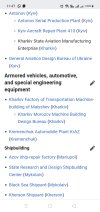Russian origin tanks explode like that because any penetration that impacts the ammo stored in their carousel auto-loaders or elsewhere in the hull and turret of the vehicle blows up the tank, if you’ve seen Russian origin tanks with their turrets blown clean off, it’s because of this, and yes, it’s fairly common.
Although The carousel is not well protected in T72 and T90S models, it is still hard to hit because it sits in the lower center of the tank, however the rest of the ammo that’s scattered around in the hull and turret is very easily damaged and is what often causes the cook-off and resulting explosion (though the carousels have known to explode too at times)
Russians have taken measures to fix this in later T90M models where the carousel has additional armor and the extra ammo (the reloads not carried in the carousel) have been moved to an isolated compartment in the rear of the turret, which has blowout panels, making it less likely for later T90M models to suffer the same fate as their older counterparts.
This does not occur much in western tanks (though they’re definitely not immune to it) because they have manual loaders, they have made their tanks significantly bigger in order to make separate, isolated ammo storage compartments with blowout panels that ensure that even if a tank is penetrated, the ammo is safe, and if the ammo is hit, the blowout panels ensure that the crew does not get injured. Complete Ammo isolation also possible in tanks with auto-loaders, as seen in the T-14 and the Japanese MBTs using a bustle style auto-loaders that store ammo at the rear of the turret and only open it for reloading, instead of a carousel style auto-loader. However that does make the tank significantly more complex and hence wasn’t used in older designs like the T72, T90 etc.
Chinese tanks use the exact same auto-loaders as Russian tanks, namely the ones from T72 and T90S, so they will definitely have this same problem, but it may not be as common as it is in the Russian tanks; because while the best option is to isolate the ammo as I stated above, there are other precautions that can be taken to reduce the risk of ammo cook off, some of these are;
1. Armored carousels as employed in the T90M, may also possibly be employed in VT-4 and ZTZ-99 but is unknown.
2. Armored storage bins for ammo reloads, this is employed in Al-Khalid and VT-4, while the ammo outside the carousel isn’t completely isolated from the Crew, it’s put in armored storage bins in the crew compartment, these storages are also lined with Kevlar to prevent spalling and fragments. Each ammo bin has its own explosion and fire suppression system that can detect a fire and go off in milliseconds in order to reduce the risk of ammo cook off.
In the Al-Khalid there’s two such storages, one at the rear of the turret and one on the side of the turret. These hold half the ammo reloads of the Al-Khalid, the other half is stored in a completely isolated compartment between the engine and crew compartment, it doesn’t have blow off panels, but it also has a similar explosion and fire suppression system. VT-4 employs a similar ammo storage strategy.
The issue with both these tanks is their extremely poor side armor, if any AT munition strikes the sides of these tanks, it will easily go through and poses a high risk of hitting ammo inside the tank and causing a catastrophic explosion. Indian T72 and T90S also have this side armor issue, but it’s not as bad as in the Pakistani tanks (however both of those have absolutely no ammo protection so they’re likely still worst off than the Pakistani tanks in regards to ammo cook-off).
3. Canisterised ammo, this is used in the Indian Arjun tank, however this one is likely not possible to employ with an auto-loader. Each round has its individual container, this way even if one round is hit and explodes, it doesn’t damage the other ones.
While the Al-Khalid and VT-4 employ some means to prevent ammo explosions, there are no such steps taken in Al-Zarrar, Type 85UG, T80UD and T72, (T90S is not much better off, but it does employ some stuff like fire suppression systems) all of these are highly susceptible to ammo cook off and catastrophic explosions, which almost always result in the entire crew being knocked out.
Bottom line is, the only way to truly prevent these is to use completely isolated ammo with blast doors or to use hard kill active protection systems or a combination of both. Something both india and Pakistan are a fair few years off from deploying.








